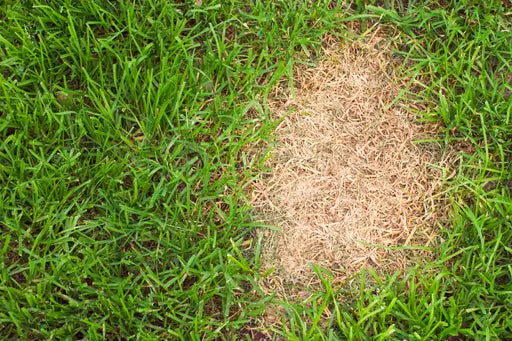
Lawn Patching
Share
How do I prevent dead grass patching?
If you don’t have an influx of animals using your lawn as a local toilet, the patches may be an infection of grass grub or a fungal disease. This could be fusarium, which occurs when temperatures and humidity are high. The disease first appears as small irregular patches of yellow grass which later turn brown and die.
There are two strategies you can take; totally renovate or just treat the infected areas. The first one is more extreme, but if you get a lot of pleasure from your lawn it may be worth renovating it and starting from scratch.
The first strategy
Remove all existing grass and introduce some Daltons Premium Lawn Soil. The mix is specially blended to ensure an even spread and improves drainage and soil quality. Then sow with a mix of grasses eg: rye, fescue, or brown top. Mixing the grass species will ensure the lawn is looking healthy all 12 months of the year. Ensure you continue to irrigate.
The second strategy
Repair the infected areas by removing grass and soil around the damaged area - at least 15cm beyond it. Add to the area Daltons Premium Lawn Patching Gold which has everything you need in one bag e.g. lawn soil, seed and fertiliser, and lightly water. Spring is the best time to start any repair work on your lawn and don't forget to irrigate!
Ongoing care of your lawn
Be sure to check the drainage of your lawn - you may need to add in some Gypsum to help improve this, and when mowing your lawn, catch your clippings and remove them.
Fertilise your lawn regularly and adequately with lawn fertiliser during in the growing season – try Daltons Premium Lawn Fertiliser. We recommend starting this process in October and apply fertiliser every 4-5 weeks until Christmas (avoid fertilising over the hot summer months). Then begin application again from late February to late April. Fertiliser lowers the PH of the soil which means the grass will grow better than the weeds!
